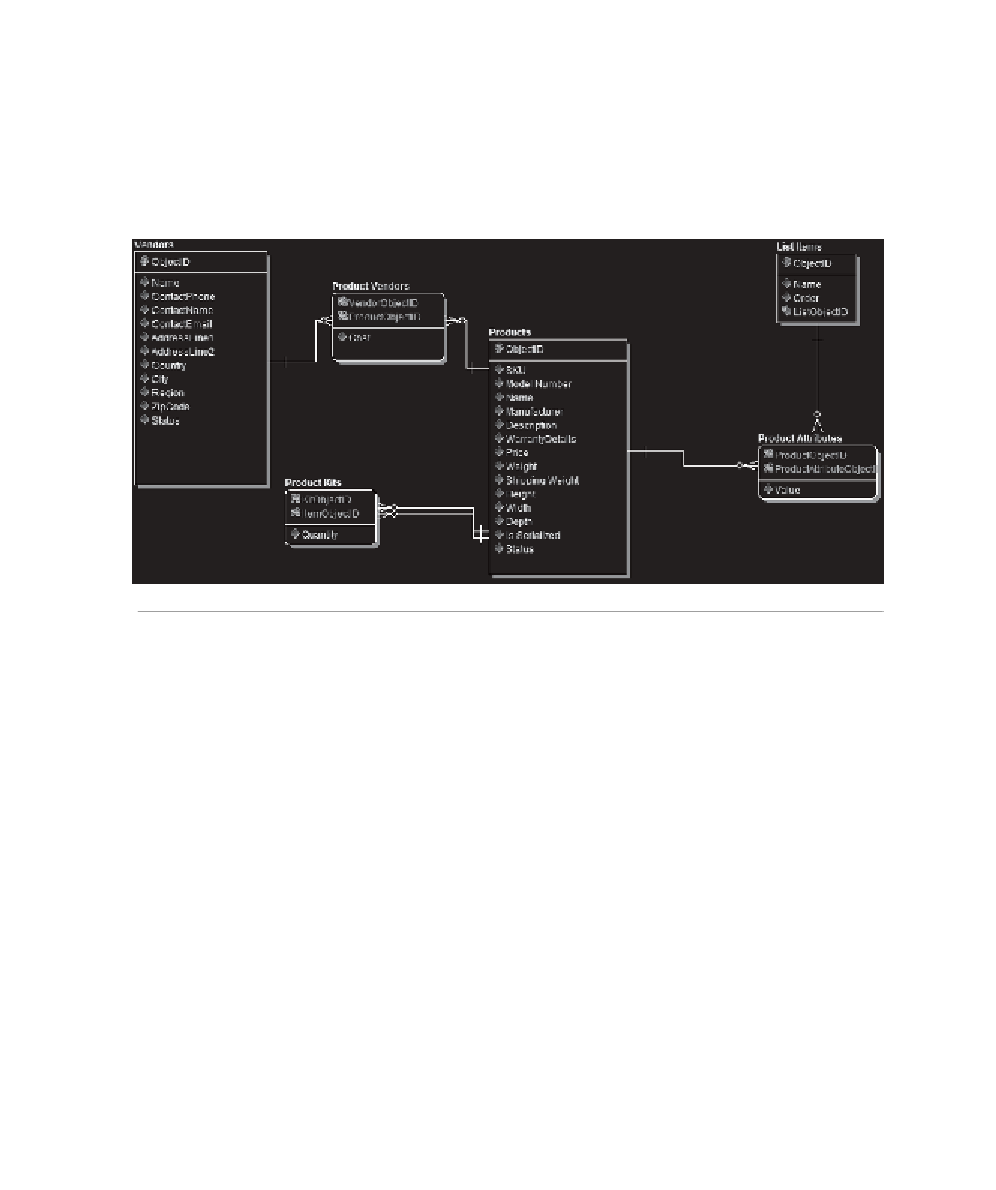Database Reference
In-Depth Information
Products
■
Vendors
■
List Items
■
Product Vendors
■
Product Kits
■
Product Attributes
■
F
IGURE
9.3
The Products submodel from the Mountain View Music logical model
This first submodel is pretty simple. Because of the way we created our
logical model, we will use all these entities as is and create tables. For ex-
ample, consider the Product Vendors entity; it exists as a many-to-many
join between Products and Vendors, but it also contains the Cost attribute.
This attribute allows us to track the cost of a particular product from a par-
ticular vendor, and the many-to-many relationship allows Mountain View
Music to set up multiple relationships with vendors for each product.
Without the cost attribute, this might have been modeled as a many-to-
many relationship without the joining entity, in which case we would have
had to add the join table to the physical model. That's only a brief aside to
let you know what to look for; in this case, however, we will make each en-
tity a table, so all that remains is to rename them in our physical model.
Figure 9.4 shows what the physical model looks like at this point, with only
tables and primary keys.

Search WWH ::

Custom Search